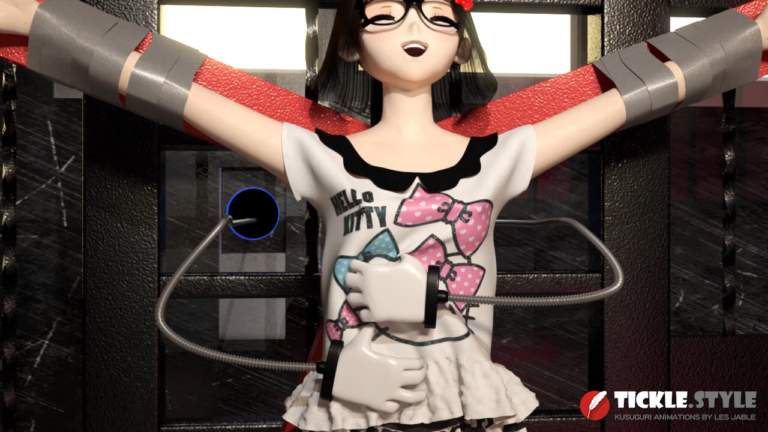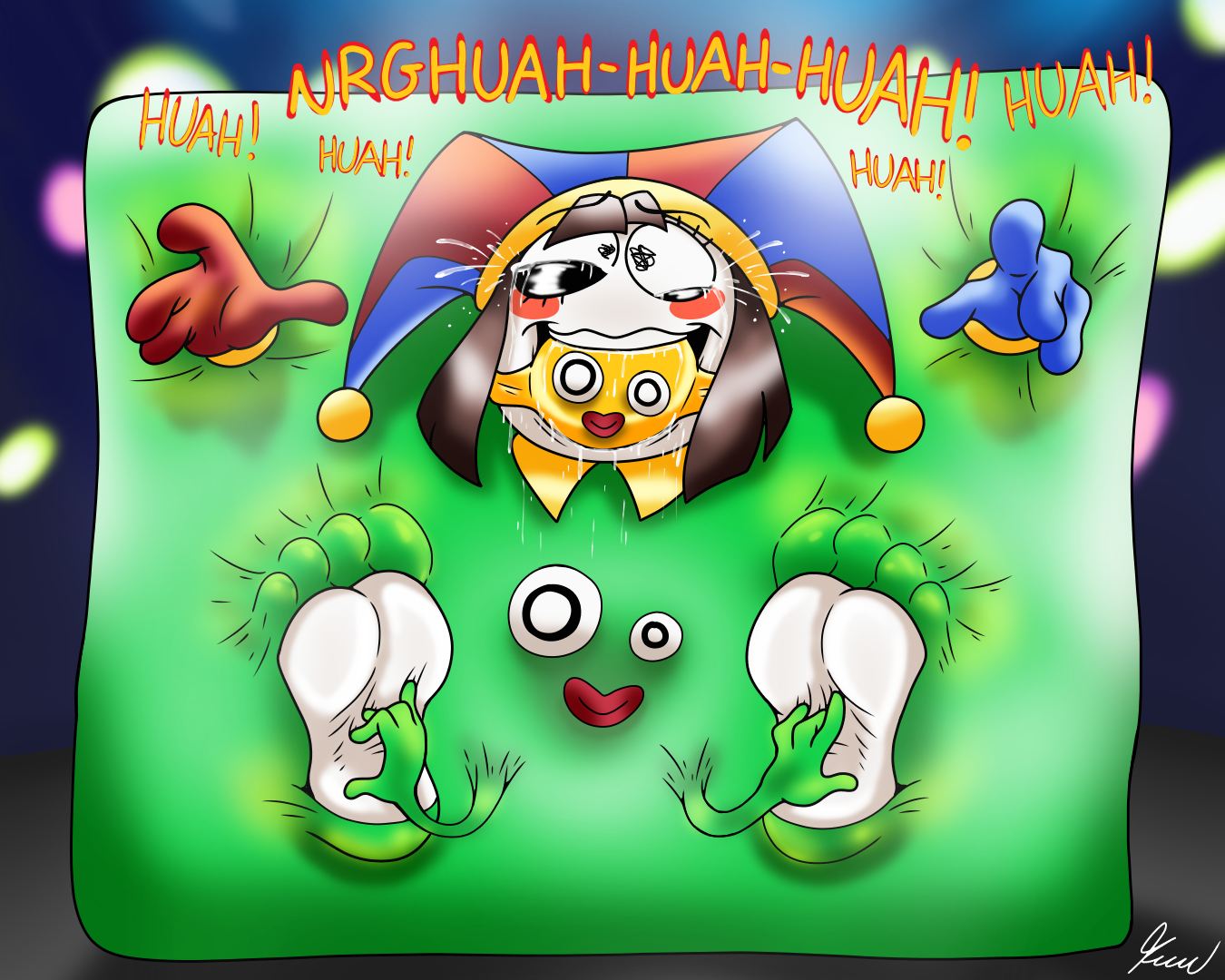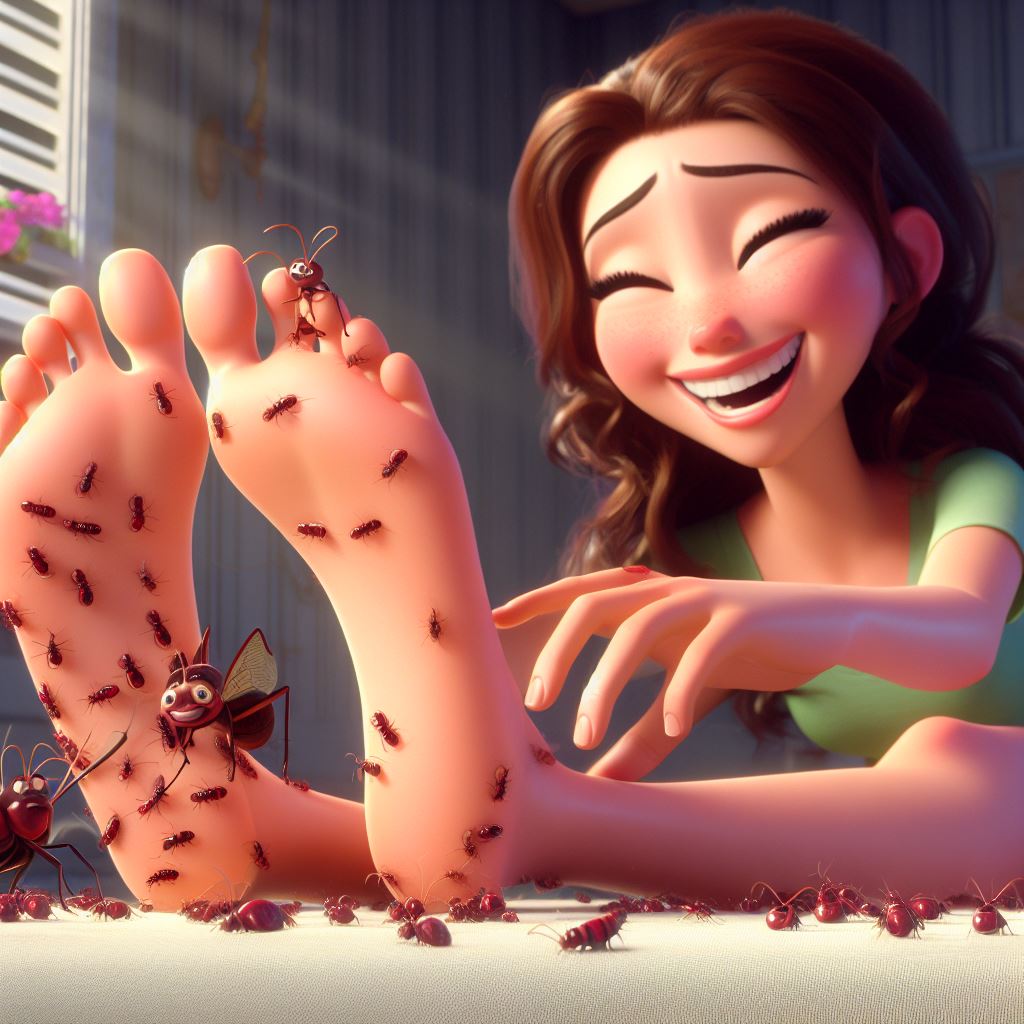Tickle Belt Spongebob - Exploring Laughter And Sensation
Have you ever stopped to think about what makes us giggle, or perhaps squirm a little, when someone touches us in just the right way? It is a pretty common experience for most folks, yet the actual feeling of being tickled, and what it does to our bodies, can be quite a fascinating thing to consider. For example, the very idea of something like a "tickle belt Spongebob" sparks a lot of curiosity about those funny sensations, doesn't it? We often associate tickling with lighthearted fun, especially when we think of characters like Spongebob, who are all about playful moments and bringing smiles to people's faces.
You know, when we talk about tickling, we're really talking about a kind of touch that causes a specific kind of reaction, usually a burst of laughter or some quick, jerky movements. It's almost like our bodies have a secret switch for fun, or maybe a little bit of a surprise, that gets flipped when a feather or fingers come into contact with a sensitive spot. The concept of a "tickle belt Spongebob" sort of takes this simple human experience and turns it into something even more whimsical, making us imagine what it would be like if laughter could be, well, delivered right to you.
And so, while the thought of a "tickle belt Spongebob" might sound like something straight out of a cartoon, it actually helps us think about the real science and the human side of tickling. We can explore why some touches make us laugh until our sides ache, while others might just make us feel a little bit itchy. There are, actually, different ways our bodies feel these sensations, and understanding them can be quite interesting, especially when we picture them happening with a fun, fictional device like this playful belt.
Table of Contents
- What Makes Us Giggle - The Sensation of Tickling?
- Two Ways We Feel Tickles - Knismesis and Gargalesis with the Tickle Belt Spongebob Idea
- Why Can't You Tickle Yourself - The Tickle Belt Spongebob Mystery?
- The Playful Side of Tickling - Making Babies Laugh with a Tickle Belt Spongebob Concept
- Is Being Tickled Always Fun - The Grown-Up View of the Tickle Belt Spongebob?
- The Language of Tickling - How We Talk About the Tickle Belt Spongebob
- What Happens When You Get a Tickle Belt Spongebob Reaction?
- The Purpose of Tickling - Beyond the Tickle Belt Spongebob
What Makes Us Giggle - The Sensation of Tickling?
When someone touches a part of your body ever so gently, just enough to get those tiny sensors in your skin to react, that is pretty much what we call tickling. It is a feeling that often leads to a burst of laughter, or maybe some quick, uncontrolled movements of your body. You know, it's a bit like a sudden jolt of fun, or a surprise that makes you squirm and giggle all at once. The core meaning of this action is to touch a body part, a person, or something similar, with a light hand, to get those nerves on the surface going and cause a feeling of being a little unsettled, or perhaps to bring out some laughter, or even those sudden, jerky body responses.
This feeling can be quite a unique one, because it is not exactly pain, but it is not always entirely comfortable either. It's somewhere in between, really. When you picture a "tickle belt Spongebob," you can imagine it doing just that – sending out these gentle touches to sensitive spots, aiming to get those happy sounds or those funny wiggles. It is a way to excite the body in a playful manner, getting a rise out of someone without causing any real harm. This sort of light touch is, in fact, what makes the whole experience so distinct from other kinds of physical contact.
So, when we talk about how to use the idea of tickling, it's often about moving your fingers, or perhaps a feather, very lightly over a sensitive part of someone's body. The goal, typically, is to make them laugh out loud. The effect is usually immediate; a little touch here, a little touch there, and suddenly you have got someone trying to get away, laughing all the while. A "tickle belt Spongebob" would, you know, conceptually be doing something very similar, creating these light, playful touches to bring about that very particular kind of joyful, squirmy reaction from whoever might be wearing it.
- Ithaca Voice
- Flavors Of India Columbia
- Nyman Associates Inc
- Adri%C3%A1n L%C3%B3pez Nudes
- Nurse Patti Tampa
Two Ways We Feel Tickles - Knismesis and Gargalesis with the Tickle Belt Spongebob Idea
It's interesting, but the feeling of being tickled can actually be thought of in two somewhat different ways. There's a kind of tickle that's called knismesis, and then there's another kind known as gargalesis. Knismesis, to put it simply, is that sensation that feels a little bit like a moving itch. It's often caused by a very light touch, maybe something barely brushing against your skin, and it can be a bit annoying, or just slightly bothersome, rather than funny. You know, like when a tiny bug crawls on you, or a loose hair tickles your arm, that's knismesis.
Then we have gargalesis, which is the kind of tickle most people think of when they hear the word. This is the one that really gets the laughter going. It usually requires a firmer, more sustained touch on a particularly sensitive area of the body. This is the tickle that makes you gasp for air and can leave you in fits of giggles. The "tickle belt Spongebob" idea, in some respects, would likely aim for this kind of tickle, the one that makes people laugh and squirm with delight. It's about getting a genuine, joyful reaction, after all.
So, you could say that a conceptual "tickle belt Spongebob" would need to be pretty smart about how it delivers its touch. It would have to know the difference between just a slight, itchy brush and a more deliberate, laughter-inducing stroke. To be honest, if you are trying to make someone laugh, you are probably going for gargalesis. But if you just want to create a mild, moving sensation, perhaps to get someone's attention, then knismesis is what you'd be after. Both are ways our bodies react to touch, but they bring about very different experiences, and the belt would need to be quite precise.
Why Can't You Tickle Yourself - The Tickle Belt Spongebob Mystery?
Have you ever tried to tickle yourself? It's pretty much impossible, isn't it? You can move your fingers over your sensitive spots all you want, but you just do not get that same uncontrollable laughter or squirming reaction that you get when someone else does it. This is a bit of a curious thing, really, and it tells us something interesting about how our brains work. When you try to tickle yourself, your brain actually knows what is coming. It anticipates the touch, and because of that foreknowledge, it sort of cancels out the surprise element that is so important for the tickle sensation to happen.
This means that for tickling to really work its magic, there has to be an element of the unexpected. The touch needs to come from an outside source, from someone or something else. This is why the idea of a "tickle belt Spongebob" makes so much sense in a way. If such a device were real, it would be an external thing, separate from you, delivering those surprising touches. It would be able to create that unexpected feeling that your own hands simply cannot manage, no matter how hard you try to catch yourself off guard. It's actually a pretty clever trick our brains play on us, keeping us from tickling ourselves.
So, if you are thinking about how a "tickle belt Spongebob" would operate, it would definitely need to be an independent mechanism. It could not rely on the wearer to activate it in a way that their brain could predict. It would have to deliver those light touches, those excitations of the surface nerves, without any prior warning for the person experiencing it. That element of surprise is, basically, the secret ingredient that turns a mere touch into a full-blown tickle session. Without it, you just get a touch, not the laughter or the squirming. It is a fundamental part of the tickle experience.
The Playful Side of Tickling - Making Babies Laugh with a Tickle Belt Spongebob Concept
One of the most common and truly delightful uses of tickling is to make little ones laugh. You might, for example, gently tickle a baby to bring out those sweet, bubbling giggles. It is a simple, very natural way to connect with them and share a moment of pure joy. The light touch on their soft skin, the unexpected sensation, often results in an immediate, happy response. This kind of playful interaction is, in fact, a really important part of how we bond with babies and young children, creating happy memories and strengthening connections through shared laughter.
The sounds of a baby laughing are, well, pretty much universally charming, and tickling is one of the easiest ways to bring those sounds out. It is a form of innocent play that requires nothing more than a gentle hand and a sensitive spot. When you consider the idea of a "tickle belt Spongebob," you can easily imagine it being used in this kind of context – not in a literal sense, of course, but as a symbol of that playful, laughter-inducing interaction. It represents the simple pleasure of making someone happy through a lighthearted physical connection.
In a way, the concept of a "tickle belt Spongebob" could be seen as a way to capture that childlike wonder and joy that comes from being tickled. It is about creating those moments of spontaneous fun and merriment. Whether it is a parent tickling their child, or friends playfully poking each other, the act of tickling often serves as a social glue, bringing people closer through shared amusement. It is a reminder that sometimes the simplest actions can bring about the biggest smiles, and that, you know, is a really nice thing.
Is Being Tickled Always Fun - The Grown-Up View of the Tickle Belt Spongebob?
While tickling might seem like a purely fun and innocent activity, especially when we think about making babies laugh, the truth is that for many adults, the feeling of being tickled can actually be quite annoying. What might have seemed like a normal part of play when we were younger, something we did with friends or family, can turn into something a bit bothersome as we get older. The same light touch that brought giggles in childhood might now just make a grown-up feel uncomfortable or even a little bit irritated. It is a pretty common shift in how people react to it.
This difference in how adults and children react to tickling is, frankly, quite interesting. Perhaps it has to do with our personal space, or maybe our sense of control. As adults, we tend to have a stronger need for personal boundaries, and an unexpected, uncontrollable physical sensation can feel like an intrusion. The thought of being tickled, rather than bringing anticipation of laughter, might instead bring a feeling of dread or a desire to get away. So, a "tickle belt Spongebob" in an adult setting might not be quite as well-received as it would be in a cartoon world.
So, you know, while the playful imagery of a "tickle belt Spongebob" might make us smile, it also prompts us to consider the nuances of human sensation and interaction. What is fun for one person, or at one age, might not be for another. It really highlights how our perceptions and comfort levels change over time. The idea of tickling, therefore, is not just about laughter; it also touches on feelings of vulnerability and personal space, especially for grown-ups who might find the whole thing a little bit much to deal with.
The Language of Tickling - How We Talk About the Tickle Belt Spongebob
The word "tickle" is pretty versatile, actually. It has several different meanings, both as a verb and as a noun, and it pops up in various ways in our everyday conversations. For instance, when you use "tickle" as a verb, it means to touch someone lightly with your fingers, or perhaps a feather, making them feel a little bit uncomfortable and often causing them to laugh. It can also mean to stroke something gently to create an itching sensation, or even to excite someone in a pleasing way. It is a word that really captures a specific kind of light, playful physical interaction.
As a noun, "tickle" can refer to the sensation itself – that slightly uncomfortable feeling you get when you are tickled. You might, for example, say you have a "tickle in your throat" if it feels a bit itchy or scratchy. This shows how the word goes beyond just causing laughter and can describe a general light, irritating sensation. The Oxford Advanced Learner's Dictionary, for instance, provides a lot of detail on the meaning, how to say it, what it looks like in a picture, example sentences, and even grammar notes and synonyms. It is a word with a lot of depth, in a way.
When we use a phrase like "tickle belt Spongebob," we are playing with these different senses of the word. We are taking the core meaning of causing laughter and playful discomfort, and we are applying it to a whimsical, cartoon-like device. This sort of phrase makes us think about the act of tickling in a new, imaginative context, showing how adaptable our language is. It is a simple combination of words, but it really gets across the idea of a fun, laughter-focused experience, and it just sort of sounds silly and lighthearted, doesn't it?
What Happens When You Get a Tickle Belt Spongebob Reaction?
When you get tickled, whether it's by a person or, conceptually, by a "tickle belt Spongebob," a few things typically happen to your body. First, you might experience a feeling of uneasiness. It's not a bad kind of uneasiness, necessarily, but more like a feeling of being a little bit out of control of your own body. This often quickly leads to laughter, which can range from soft giggles to loud, uncontrolled bursts. And then there are the spasmodic movements – those sudden, jerky reactions where your body tries to pull away or squirm. You know, it is a pretty common response.
These physical reactions are often involuntary, meaning you do not really choose to do them. Your body just reacts. When someone moves their fingers lightly over a sensitive part of your body, you often find yourself laughing and squirming without even thinking about it. It is an immediate, almost reflex-like response to that particular kind of touch. The purpose of a "tickle belt Spongebob" would be to reliably produce these very reactions, aiming for that quick, fun, and perhaps a little bit chaotic, physical outcome. It's all about getting that immediate, lively response.
So, the moment those surface nerves are excited by a light touch, your body springs into action. You might try to escape the touch, or you might just collapse into a fit of laughter. It is a very direct link between a specific physical input and a strong physical and emotional output. The "tickle belt Spongebob" would, therefore, be a device focused on triggering these very human, very immediate, and often very funny
- Daily Streak Wwe Supercard
- The Commonsense Show
- American Embassy In India
- Sophie Raiin Spider Man
- One Piece Game Rant

Videos – Tickle.LA Tied.TK (Tickle Style)

The Amazing World Of Digital Tickling by Skoufidios on DeviantArt

AI Bug Tickling #16 by Allrighty81 on DeviantArt